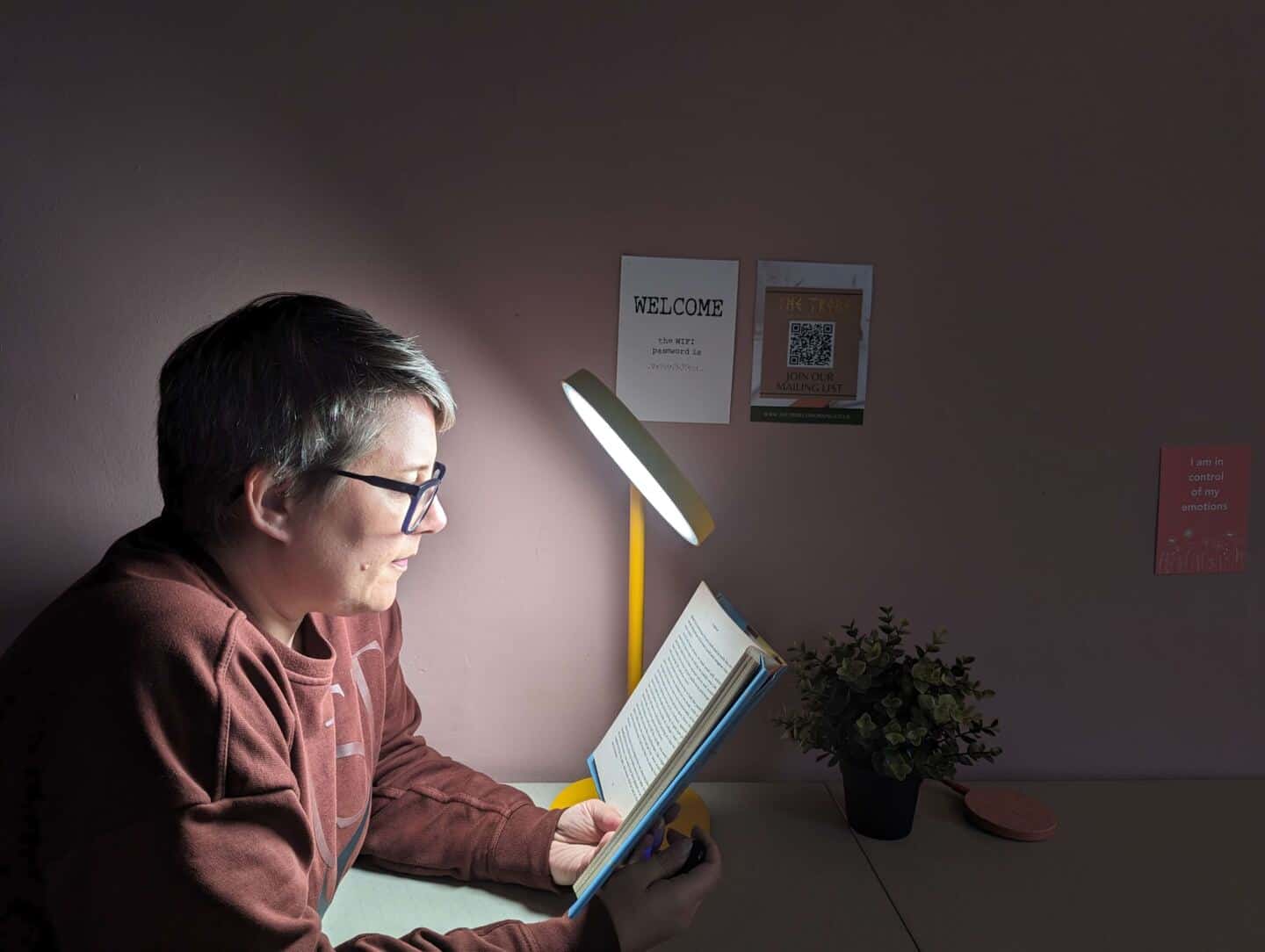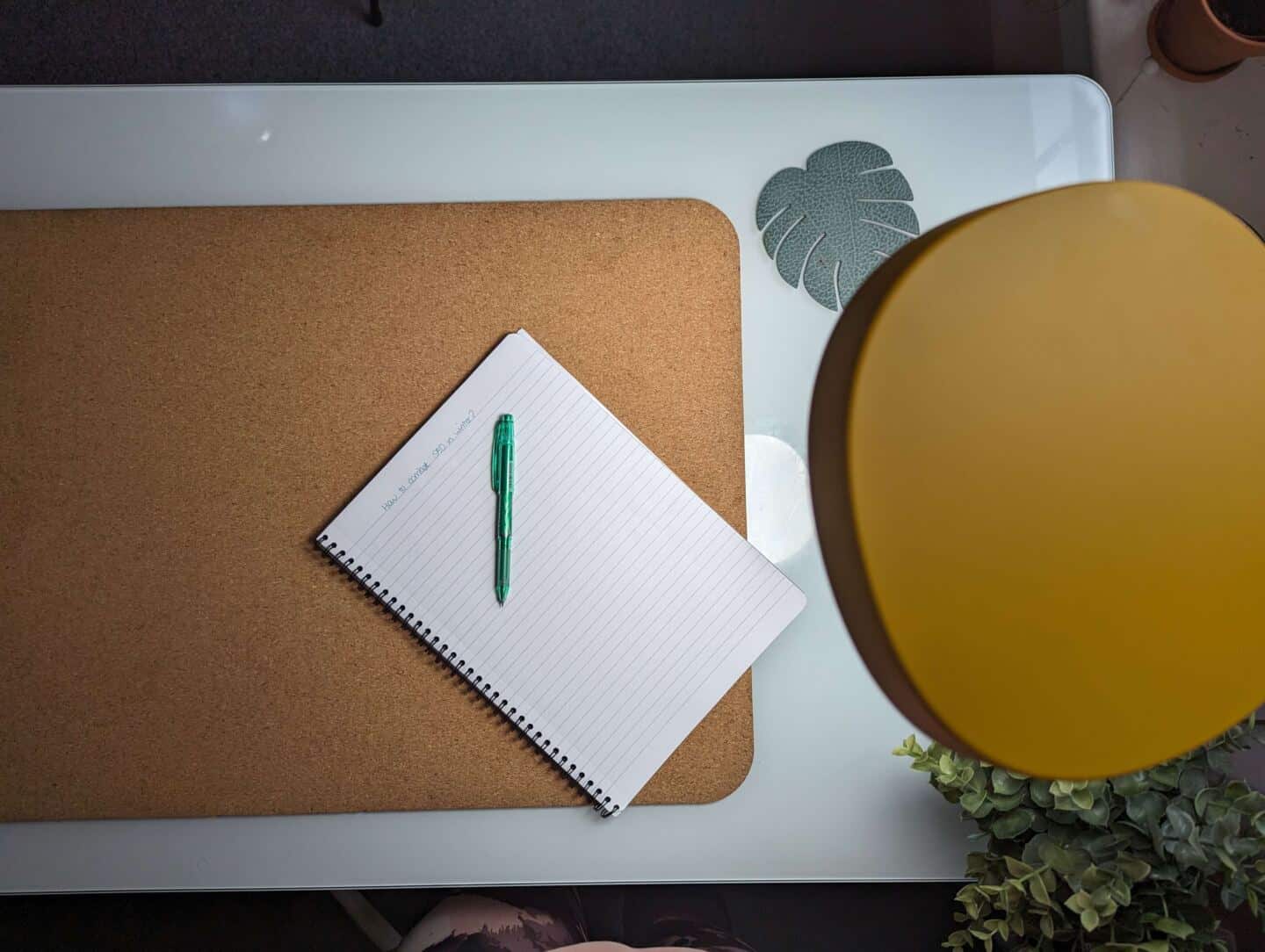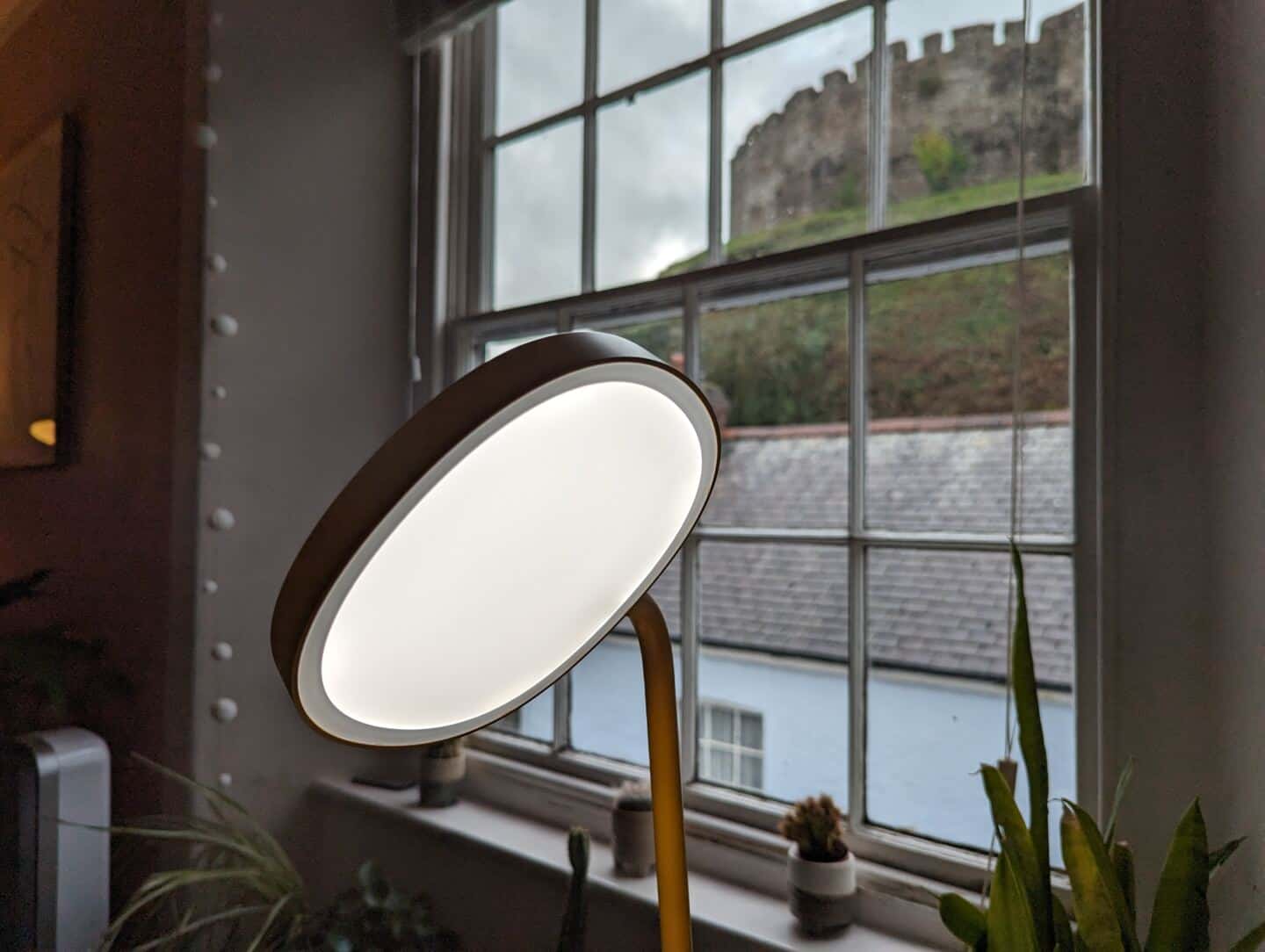Table of Contents

Me writing my Lumie Task Lamp review
It’s that time of year again. The clocks went back a few weeks ago and whilst the lighter mornings make it much easier to rise, those dark nights draw in ever so early now. As we proceed further into November there is just a general lack of light and some days feel like they never actually brighten up at all. I’ve spoken before about how much the autumn/winter season affects my mood and also my husband’s mood as we both struggle with low moods at this time of year. We have never been diagnosed as suffering from Seasonal Affected Disorder (SAD) but we both suffer with many of the symptoms.
What is a SAD Light?

A SAD light is a light that simulates the sunlight that we don’t get exposed to during the darker winter months. It is a really bright light that encourages our brain to reduce the production of melatonin, the hormone that makes us sleepy, and to increase the production of serotonin, the neurotransmitter and hormone that regulates mood.
How many Lumens for a SAD Light?
To be considered a SAD light, medical professionals agree that a light must typically emit 10,000 lumens to be effective at treating SAD. Many SAD lamps do not offer 10,000 lumens though so it is essential to check when buying a SAD light that yours does meet this requirement otherwise it might not be as effective.
How do SAD Lights Work?

It is generally accepted that you should expose yourself to the light from a SAD light for between 30 minutes and an hour. This should be done within the first hour of waking up. You also need to make sure that you sit at a specific distance from the SAD light and I believe this has to do with the strength of the light emitted. You would need to follow the instructions supplied with the light.
What Months to Use a SAD Light?
Medical professionals recommend that you start your SAD light therapy as soon as any symptoms start to appear. The symptoms may include feeling lethargic, anxious or irritable. This could be as early as September or October for some people. You should continue using the SAD light until spring when the natural light improves and your symptoms lessen.
How Often to Use a SAD Light?

You may need to use your SAD light every day during the darker months. Experts recommend using it within the first hour of being awake but depending on the severity of your symptoms you may need to use it more than once a day. You should consult your doctor to make sure you get the best advice for your particular situation.
How to Choose the Right SAD Light for Your Needs
There are many different SAD lights on the market so it’s important to choose what works for you. Maybe the wake-up alarm lights might work for you to help you rise and fall asleep at night. Maybe you need a portable light that you can take around with you from place to place or maybe a desk lamp might be better for your needs. Light therapy has to work for you and fit in with your daily routine seamlessly for it to work. So make sure you do some research before investing.
Are SAD Lights Effective?

Whilst there have been many studies on the efficacy of SAD lights the evidence seems to be inconclusive. There are so many variables that it is difficult to assess.
What I can say, from a personal perspective, is that we have used SAD lights at home for the past six years and it has made a huge difference for both of us. We have one that is our Wake-Up Light Alarm Clock from Lumie which you can read about here. And we have another which is positioned on the dining table so we get a nice burst of light first thing in the morning as we have our breakfast and that really helps to set us up for the day. However, our mornings are quite rushed so we probably don’t get the full effect from the SAD lamp as we don’t spend long enough exposed to the light. Some mornings I skip breakfast too so get no benefit at all.
My husband works outside as a gardener so he is out in the natural light all day long but as I work in my office all day long I don’t get the same exposure to daylight. So when Lumie contacted me and asked me if I would like to do a Lumie Task Lamp review I thought it would be a really good idea because having a SAD light in my office would help me get the full exposure every day.
Lumie Task Lamp Features and Specifications

Below are some of the features that I thought were important to know for this Lumie Task Lamp review:
- It comes in five different colours: Charcoal Blue; Golden Yellow; Sage Green; Steel Blue and White Mist.
- It emits 10,000 lux when used at a distance of 15cm
- It features high-end broad-spectrum LEDs to minimise eye strain
- It has a highly adjustable head, neck and stem
- The light is dimmable using a simple capacitive slider mechanism
- It features CRI 95+ high-contrast lighting that lets you see objects, text and textures as they really are
- It provides excellent light for detailed work
- It can be used to improve focus and appearance in video calls
Personal Experience: Using the Lumie Task Lamp

So let’s dive into my Lumie Task Lamp review. When the Lumie Task Lamp arrived I really surprised to see the high-quality packaging also doubled up as the shipping carton so there was much less cardboard to dispose of. Once I opened the packaging I could tell that was all made from cardboard, paper or bio-degradable plastic alternatives so I was happy to see that Lumie was thinking of the environment.
What I really like about the Lumie Task Lamp is the design. It is really sleek and minimal and ergonomic. It is nice and weighty which means it is sturdy and stable but without being overly heavy. It comes in a lovely variety of five different colours. I particularly love the bold sunshine colour of the yellow lamp I chose which works really well with my pink office decor.

The ease of use of the Lumie Task Lamp really surprised me. I know most lamps are easy to use but the interface for this one is just so seamlessly sleek. The logo on the base of the lamp is actually a capacitive slider mechanism. You simply slide your finger over the logo from left to right to turn the lamp on and increase the intensity of the light. To dim the light again you simply slide your finger back towards the left.

I found the Lumie Task lamp to be extremely adjustable. The stem swivels as well as the head of the lamp which can be adjusted just shy of 90 degrees up and down and 180 degrees side-to-side. This means you can easily control the angle of the light as well as the intensity making it really flexible.
I’ve been using this lamp for about six weeks now. I always like to test products out for a reasonable amount of time before I share my reviews just to make sure that I haven’t missed anything and that my first impressions are accurate.
I can honestly say that using the Lumie Task lamp has been a real pleasure. My office is actually quite dark, especially in the autumn and winter months. The overhead lighting really isn’t bright enough so I do need a supplementary source of light. The intensity of the light emitted by the Lumie is spot on. It illuminates everything perfectly so that there is no more eye strain when working on tasks that need focus but there is also no glare created on my computer monitor despite the lamp being right next to it.
I can position it really close to my face (15 cms away) for the first 15 minutes of my day to get the required results. However, I rarely sit that close to it. It’s more like 25-50cms away from my face for between 60 and 120 minutes. But as it’s on my desk and I would be sitting right there anyway, this longer duration is no problem at all. It does not affect my daily routine in any meaningful way other than to make me feel better each day.
Pricing and Value for Money
I recognise that at £249 this is not a cheap lamp. It won’t be affordable for everyone. But I think that instead of focusing on the price, it is much better to focus on the value that it delivers. How much would you pay to feel less anxious, less irritable, less stressed, less tearful, less lethargic and less sociable as well as feeling more able to concentrate and more active? How much is that worth?
For anyone suffering from SAD who knows how it feels to go through this period each autumn/winter like me, I think £249 is well worth it. What is even better is that Lumie understands that many people who suffer from SAD will understand the value but still won’t be able to cough up £249 for the Lumie Task lamp. That’s why there is an option on their website to self-identify as a SAD sufferer and benefit from a reduced price of £207.50.
Apparently, you can legally claim relief from VAT if you (or the person you are buying a Lumie Task lamp for) suffer(s) from SAD (Seasonal Affective Disorder). So you get to buy it without the VAT added to the price.
Final Verdict: Is the Lumie Task Lamp Worth It?
Personally, I think the Lumie Task lamp is absolutely worth the money. Considering all the benefits it offers and the really well-thought-out design, aesthetics and ergonomics of the lamp, I find it provides excellent value for money.
If it is anything like the SAD light we have on our dining table, which is still going strong since we got it in 2017, it’s easy to see how it is an investment worth making. We haven’t had to change the LED bulb which will apparently last 50,000 hours or just shy of six years of constant usage. So hopefully we have a good few years left yet.
One surprising benefit I have found from the Lumie Task Lamp is that is really great for providing extra light for those video calls or for recording social media content. No need for a ring light anymore, which I could never really use anyway as the reflections in my glasses were too intense. Don’t seem to have that problem with the Lumie Task Lamp though.
Overall, my Lumie Task Lamp review has been extremely positive and I would have no doubt recommending it to other office-based SAD sufferers or those who work from home or spend time doing anything that requires a task light.
I’d be more than happy to answer any questions that you may have, so please do ask away in the comments.
